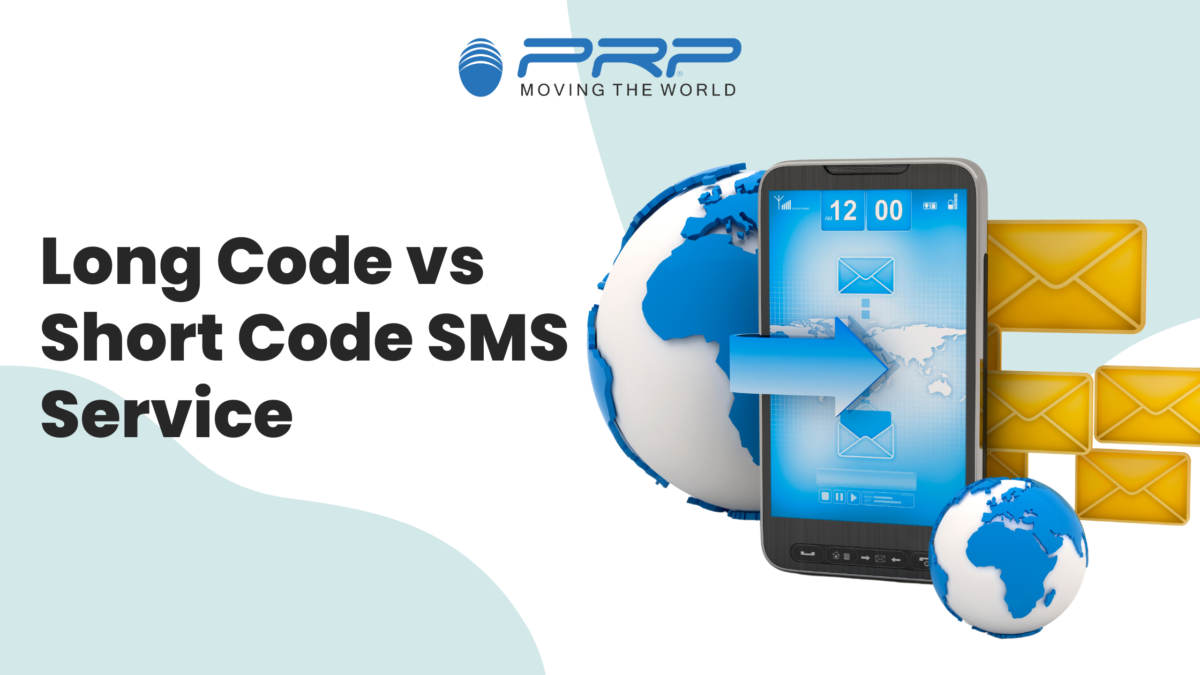SMS Long Code vs SMS Short Code: Knowing the Difference

Two commonly used SMS marketing tools and communication tools are SMS short codes and SMS long codes. It is essential to understand their differences and unique benefits for businesses looking to leverage SMS effectively, even though they serve similar purposes. Here’s an overview of what SMS short codes and long codes are, their benefits, and how they can be used.
What is Short Code SMS?
A short code SMS involves sending and receiving text messages using a short, typically five or six-digit number. It is often used for mass marketing campaigns, contests, and promotions. SMS service providers usually provide short codes, which are regulated by telecommunication authorities.
Benefits of Short Code SMS:
With their high throughput capabilities, short codes are perfect for mass marketing campaigns aiming to engage customers quickly. In addition, short codes are customizable, which makes them a great choice for branding and campaign recognition. Stringent regulation by telecommunication authorities ensures compliance with legal standards, including obtaining recipient consent, and protecting consumer privacy.
Uses of Short Code SMS:
Business use short codes for diverse communication strategies, such as promotional campaigns, contests, and giveaways. It also allows for timely alerts, notifications, and updates, ensuring seamless customer communication. As a result of advertisements, potential customers can initiate contact via text message, enabling them to generate leads.
What is Long Code SMS?
The long code SMS uses a standard 10-digit telephone number, similar to a cell number, to send SMS messages. The advantage of long codes is that they offer more personal communication and are often used for localized communication efforts. They are commonly used for customer support, lead generation, and lead generation.
Benefits of Long Code SMS:
By offering a broad reach to customers worldwide, long code provide businesses with personalized communication, strengthening relationships through individual engagement. The versatility of long code allows them to be used for many different applications, including customer support, order inquiries, feedback collection, and appointment scheduling.
Uses of Long Code SMS:
Long code enable convenient text-based communication for query resolution an assisteance, enabling versatile customer support. Additionally, long codes facilitate feedback collection via text-based surveys, empowering businesses to gather valuable insights and reviews from customers. Furthermore, they can be used to send appointment reminders and confirmations, improving scheduling efficiency and reducing no-shows.
Short code SMS vs Long code SMS
SMS short codes and SMS long codes share many similarities as tools for SMS communication, but they also differ in a number of important ways. To better understand how SMS short codes and SMS long codes complement each other in various business contexts, let’s dive deeper into their differences.
1. Reach and Scalability:
Short Code SMS: Short codes are designed for high-volume messaging, making them ideal for mass marketing campaigns that target a broad audience across different regions or demographics.
Long Code SMS: Long codes are more suitable for personalized communication and interactions with individual customers. While they may not offer the same scalability as short codes, they provide a more intimate connection with recipients.
2. Memorability and Branding:
Short Code SMS: Short codes are memorable and easy to recall, often customized to reflect a brand or campaign. This enhances brand recognition and encourages customer engagement.
Long Code SMS: Long codes utilize standard 10-digit phone numbers, which may be less memorable than short codes. However, businesses can still leverage long codes for branding purposes by incorporating recognizable keywords or phrases.
3. Cost and Affordability:
Short Code SMS: Short codes often involve higher setup and usage costs compared to long codes due to their premium nature and regulatory requirements. However, the cost may be justified by the increased reach and engagement potential.
Long Code SMS: Long codes are generally more cost-effective, with lower setup and usage fees. They provide businesses with a budget-friendly option for conducting one-to-one communication and customer support activities without incurring substantial expenses.
3. Compliance and Regulation:
Short Code SMS: Short codes are subject to strict regulations and compliance requirements imposed by telecommunication authorities. Businesses must obtain opt-in consent from recipients and adhere to spam regulations to ensure legal compliance.
Long Code SMS: Long codes are typically less regulated than short codes, offering more flexibility in communication. However, businesses must still ensure compliance with relevant laws and regulations governing SMS communication, especially regarding privacy and consent.
Short codes and long codes both serve distinct purposes in SMS communication. Short codes are great for mass marketing campaigns, but long codes are great for personalized communication.
https://www.hituponviews.com/wp-admin/post-new.php









